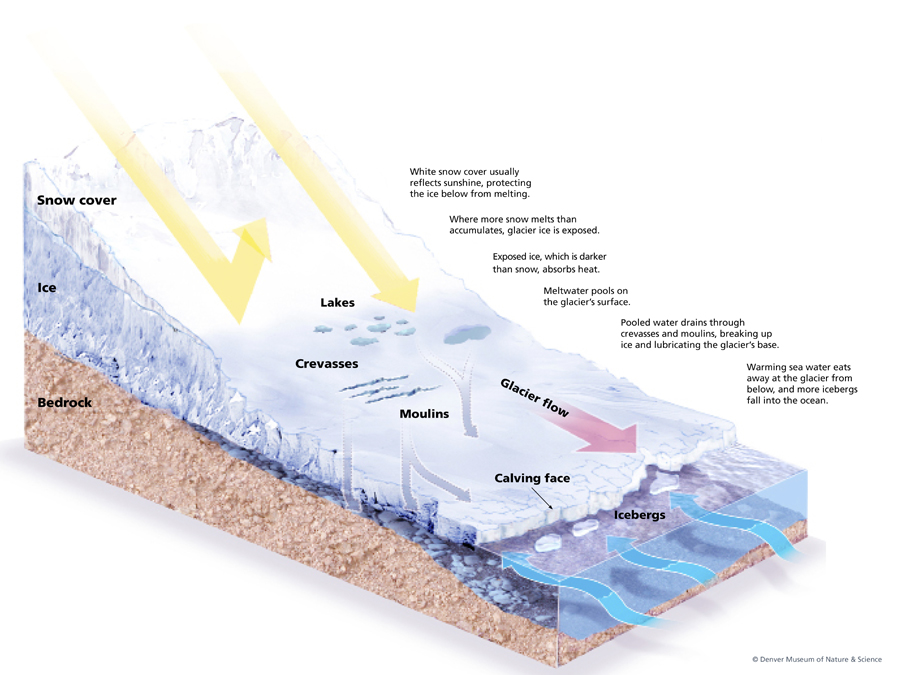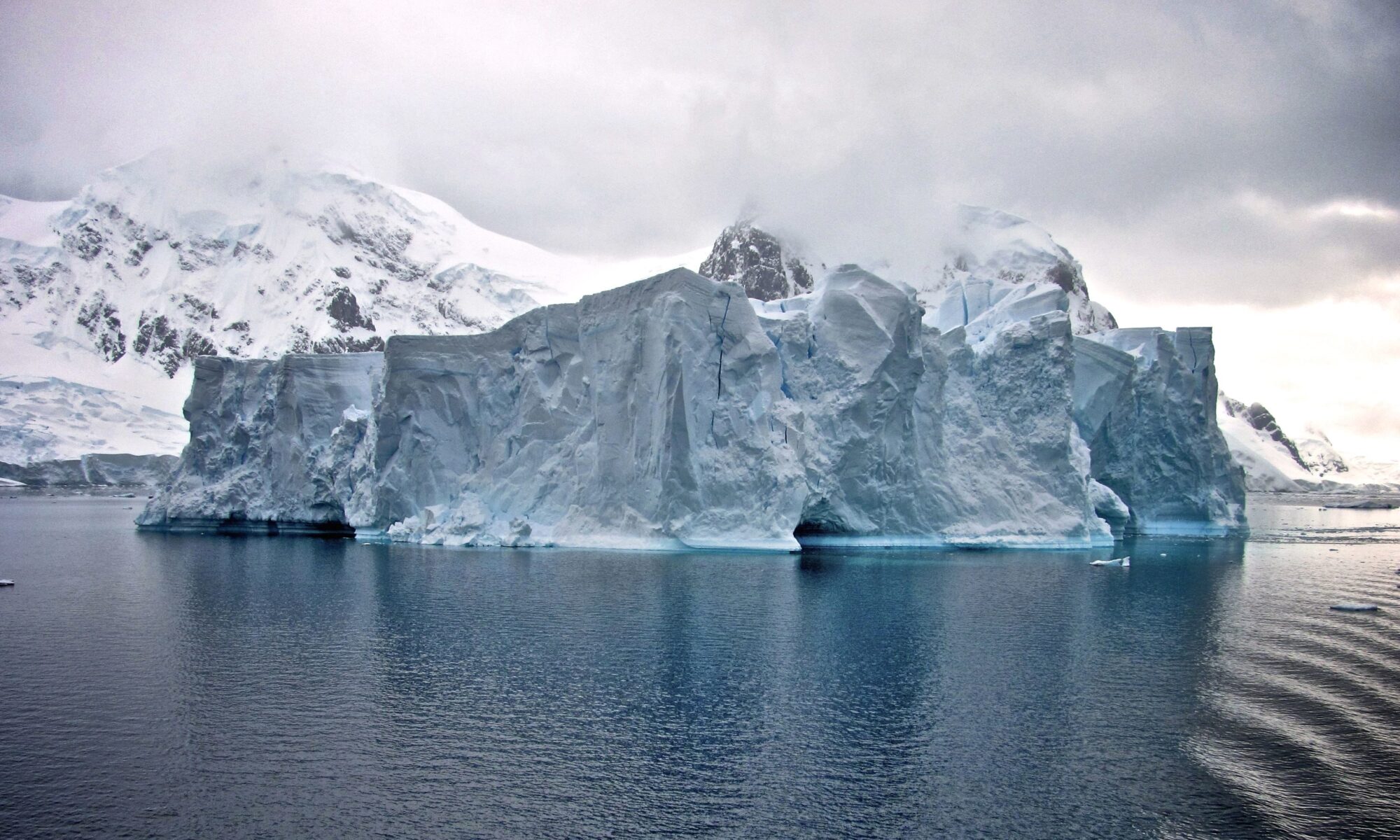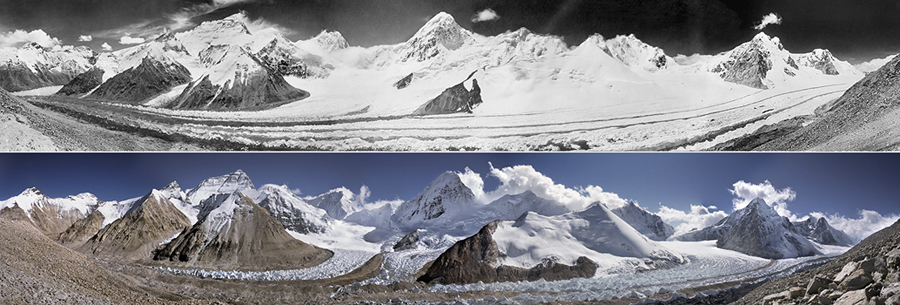Glaciers: Rivers of Ice
Glaciers are solid, moving masses of ice formed when snow becomes compressed into ice. They occur in regions with heavy snow accumulations and cool summers. Glaciers appear on all continents, except Australia, and are classified into three different types: mountain, valley, and tidewater.
Because of their enormous weight and the force of gravity, glaciers flow like rivers, sculpting the land during their journey. Icebergs— immense floating blocks of ice—break off (or “calve”) from mountain and tidewater glaciers that touch the sea.

Glacier Dynamics, All Rights Reserved, Bailey Archive, Denver Museum of Nature and Science
As in earlier centuries, contemporary artists and scientists are calling attention to the world’s glaciers. No longer concerned with interpreting distant geologic time, artists now capture the rapid rate of climate change happening within our lifespan. Many photographers and filmmakers have committed their lives to documenting the fate of retreating glaciers.
Top banner image: First photo – Edward Oliver Wheeler (Canadian, 1890-1962), West Rongbuk Glacier, 1921, Royal Geographical Society, London
Location: Northern Slope of Mount Everest, 29,028 ft. (8,847.7m) Tibet, China. Range: Mahalangur Himal. Elevation of glacier: 17,300-20,341 ft. (5,273-6,200 m.); Average vertical glacial loss: 341 ft. (104 m) between 1921 -2008
Bottom photo: David Breashears (American , b. 1955), West Rongbuk Glacier, 2008, Glacierworks

